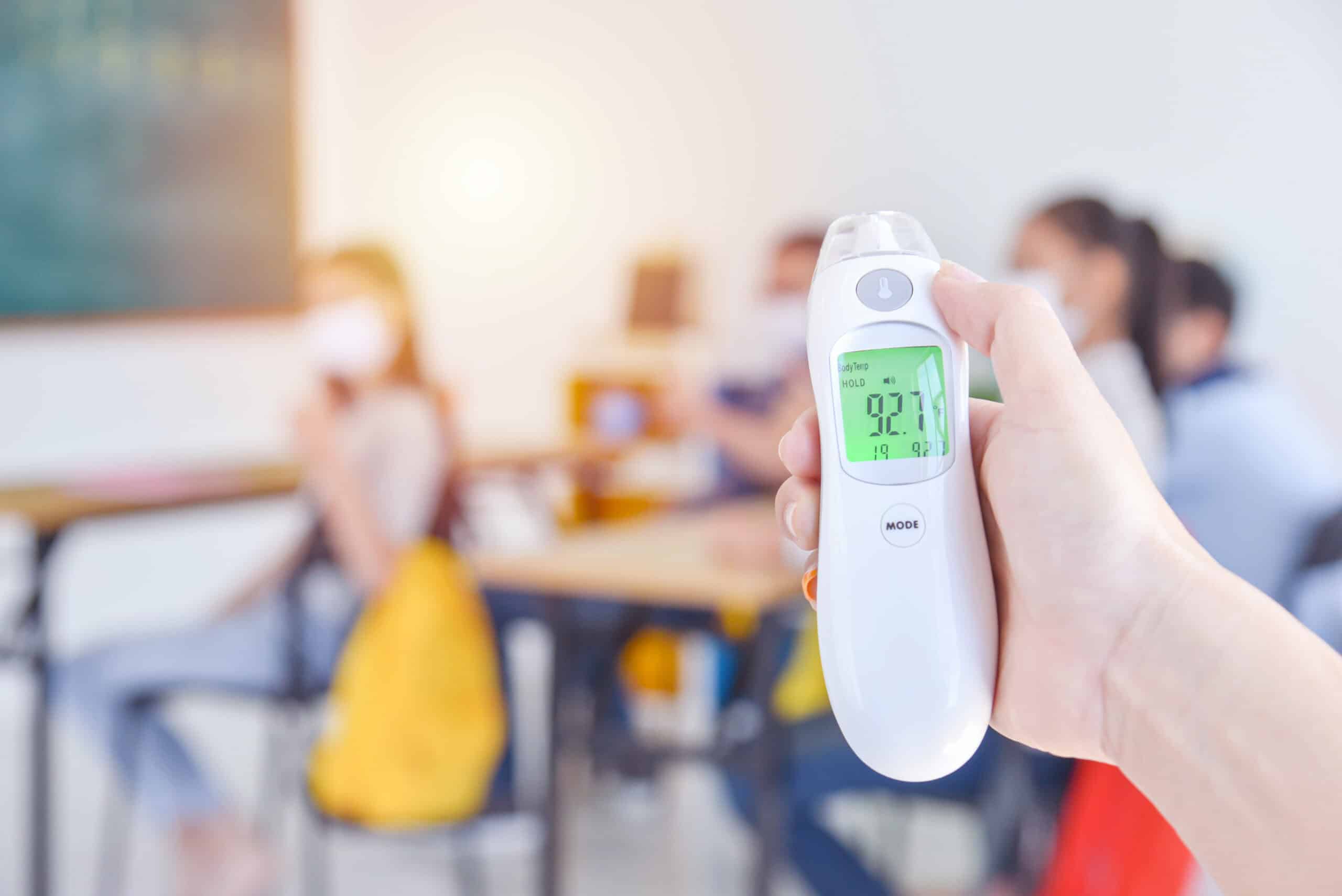“We have found at the [National Institutes of Health] that it is much, much better to just question people when they come in and save the time, because the temperatures are notoriously inaccurate many times,” Fauci said, adding that hot weather can cause inaccurate readings and suggested that his own readings have gone as high as 103 before entering air conditioning.
Fauci was also quoted as saying “I’m not sure taking temperatures is all it’s cracked up to be, because there are a lot of false negatives and false positives,” during an interview with MarketWatch. He suggests that screening should involve questions about symptoms and contact with infected people rather than taking temperatures. “The time spent asking a couple of simple questions is probably more effective than just taking temperatures,” he said
Even before his comments measures such as temperature screenings, wearing a mask to enter a restaurant but being able to remove it while sitting down safely at certain establishments while eating only certain foods, only using one door for entry and exit, and wearing masks with slits in them to play a woodwind instrument have been heavily criticized as being mere control and “safety security theatre”, meaning that they are not proven to stem the spread of the virus.
The Atlantic suggests that this type of temperature check can backfire because not everyone will have a fever or an infected person could have just had heavy air conditioning lowering their temperature allowing a potential contagious person to be cleared for entry into a space in which they could come into contact with other people and spread the infection. Some suggest that businesses that are preparing to transition to work back at the office instituting a temperature check policy may even face legal barriers as these are medical tests that require an individual’s consent to conduct.
Meanwhile, in China, the view of these checks is more positive, where people were required to report their temperatures to the government on a daily basis as the government worked to gain some control over the spread of the virus, but researchers say that this practice was not as effective as they thought it would be.
“All in all, temperature screening may catch some cases of the Covid-19 coronavirus. But it could miss many others,” wrote public health expert Bruce Y. Lee for Forbes in July. “Thus, be skeptical whenever anyone tries to assure you that things are safe just because they are doing temperature and symptom screening.”
Large corporations such as Amazon, Tyson Foods, Disney theme parks are all using temperature screening, and it appears as if schools, hospitals, grocery stores, casinos, transportation hubs, courthouses and other municipal buildings are also following suit. Some are even making use of infrared cameras to detect people who have a temperature of over 100 degrees in their offices, such as Related Cos. However, some are cautioning that crowd scanning cameras could be even less accurate than handheld devices and they are less likely to detect a mild fever.
Currently, there is no nationally enforced healthy temperature range when it comes to COVID-19, however the CDC considers any temperature higher than 100.4 degrees Fahrenheit to establish a fever.
Infectious disease expert Amesh A. Adalja, MD, told Health, “Fever screening can be one part of a wider system,” because “prevention of infection with the new coronavirus is a multi-faceted task.”
Simply asking if one has symptoms or if they have come into contact would mean that you have to rely on that person telling the truth as well as knowing if the people that were around them were infected or not, really that’s not reliable at all if one cares to be honest. The most accurate temperature checks remain to be when taken from under a person’s tongue or from their rectum, but that’s not really practical in these settings, meaning until something better comes along we will have to make do with what is available.




